WITH UNSUNG LEADERS -Stories of behind-the-scenes leaders who take on challenges for a better future-
Striving for “The World’s Lightest” Automotive Exterior Parts
January 1, 2023
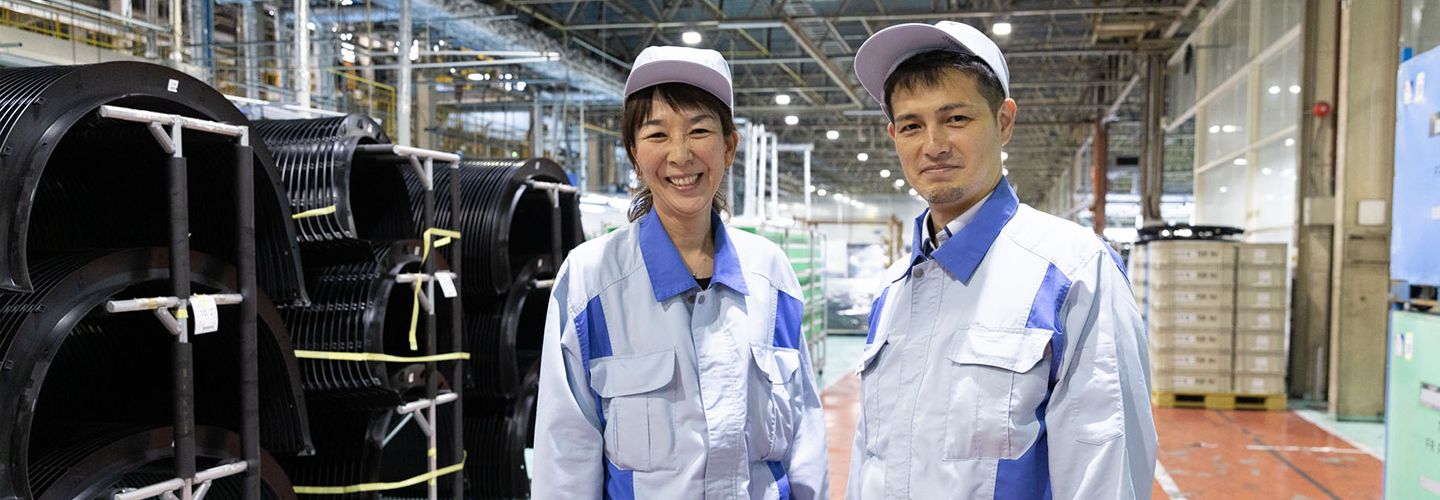
The fuel efficiency and environmental performance of automobiles can be greatly improved by weight reduction. That is why many plastic parts that are lighter than metal are used in today’s vehicles. A technology that can further reduce the weight is “foamed molding,” which disperses gas finely inside the resin.
In 2016, Resonac Automotive Products Corporation (Hitachi Chemical Automotive Products Co., Ltd. at the time of development) developed its own resin foamed injection molding technology that can be applied to automotive exterior parts. Even now, Resonac is the only company that can make foamed moldings for exterior parts*. We asked about the behind-the-scenes efforts in the development of lightweight foaming technology for exterior parts, which was “an extremely difficult journey with high technical hurdles” from members of the project team, Design Department Chief Engineer Shingo Nakano and Design Department Engineer Naoko Mitsuishi.
The Impetus for Development was a Drive to Regain Lost Trust
First of all, what kind of technology is Resonac’s “lightweight foaming technology for exterior parts”?
Mitsuishi: It is our proprietary technology that can achieve weight reduction while maintaining rigidity and strength by foaming resin parts like a sponge. Only the interior is foamed, leaving the surface smooth and beautiful. It is used for the exterior parts of automobiles, which require a particularly high-quality external appearance.
“Lightweight” is an eternal theme in the automotive industry, and in recent years, there has been a shift from metal parts to resin parts. In addition, demand for improved fuel efficiency is increasing year by year due to environmental regulations, mainly in Europe and the United States. And so, there is a need for further weight reduction of plastic parts. This is why the “resin foamed injection molding technology” was created, which makes the resin material thinner (thin-walling) and foams it into a sponge-like state while maintaining rigidity.
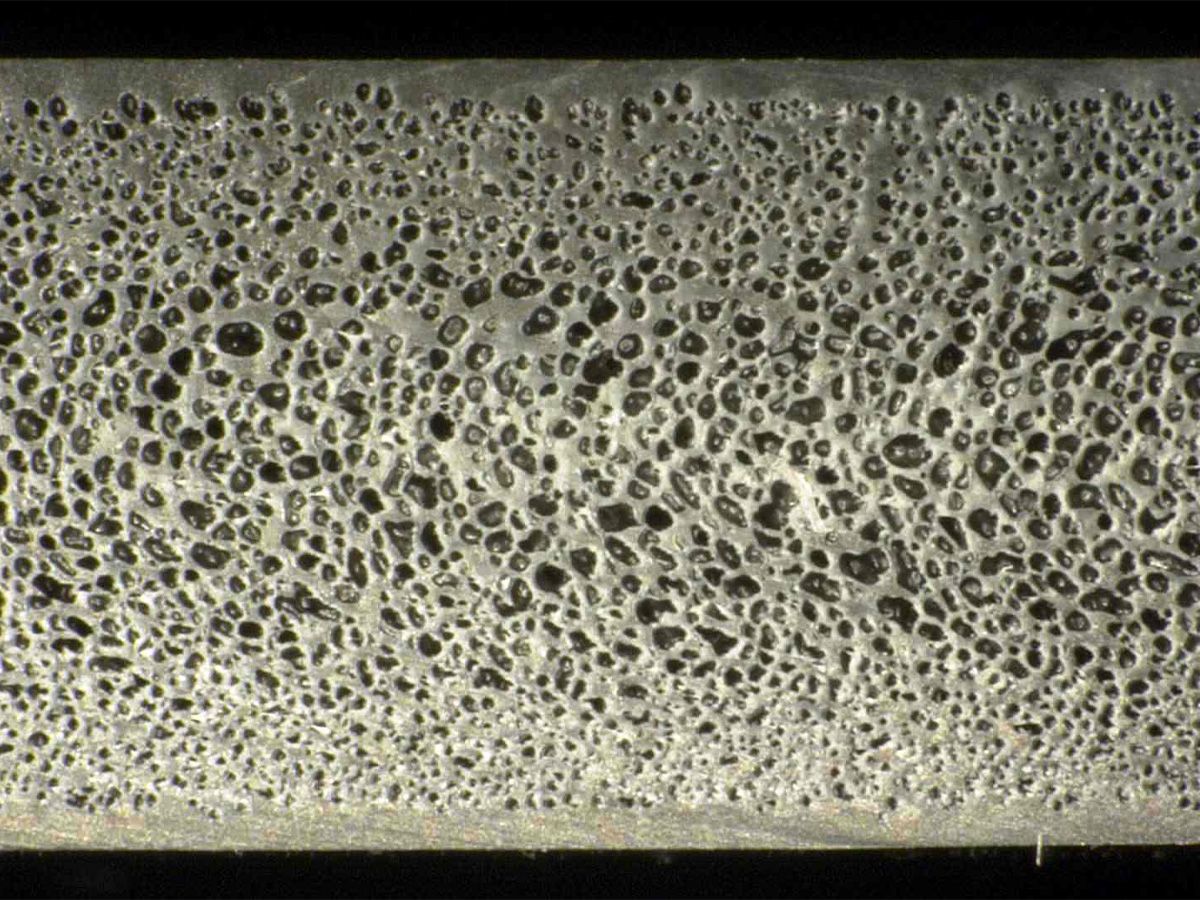
Cross section of a part made by resin foamed injection molding technology
However, because parts made with this technique often have an uneven surface or are not glossy enough, it has been said that it is difficult to clear the external appearance quality of exterior parts required by automotive manufacturers. Therefore, the technique is mainly used for interior parts by other manufacturers.
This “resin foamed injection molding technology” was combined with Resonac’s proprietary “material design technology,” “die design technology,” and “molding technology,” which have been cultivated over many years, to create the “lightweight foaming technology for exterior parts.” The side sill protector (the decorative part at the bottom of the door), which uses foaming technology to reduce the weight of the exterior, has achieved a weight reduction of approximately 30% while maintaining the same level of rigidity as conventional products.
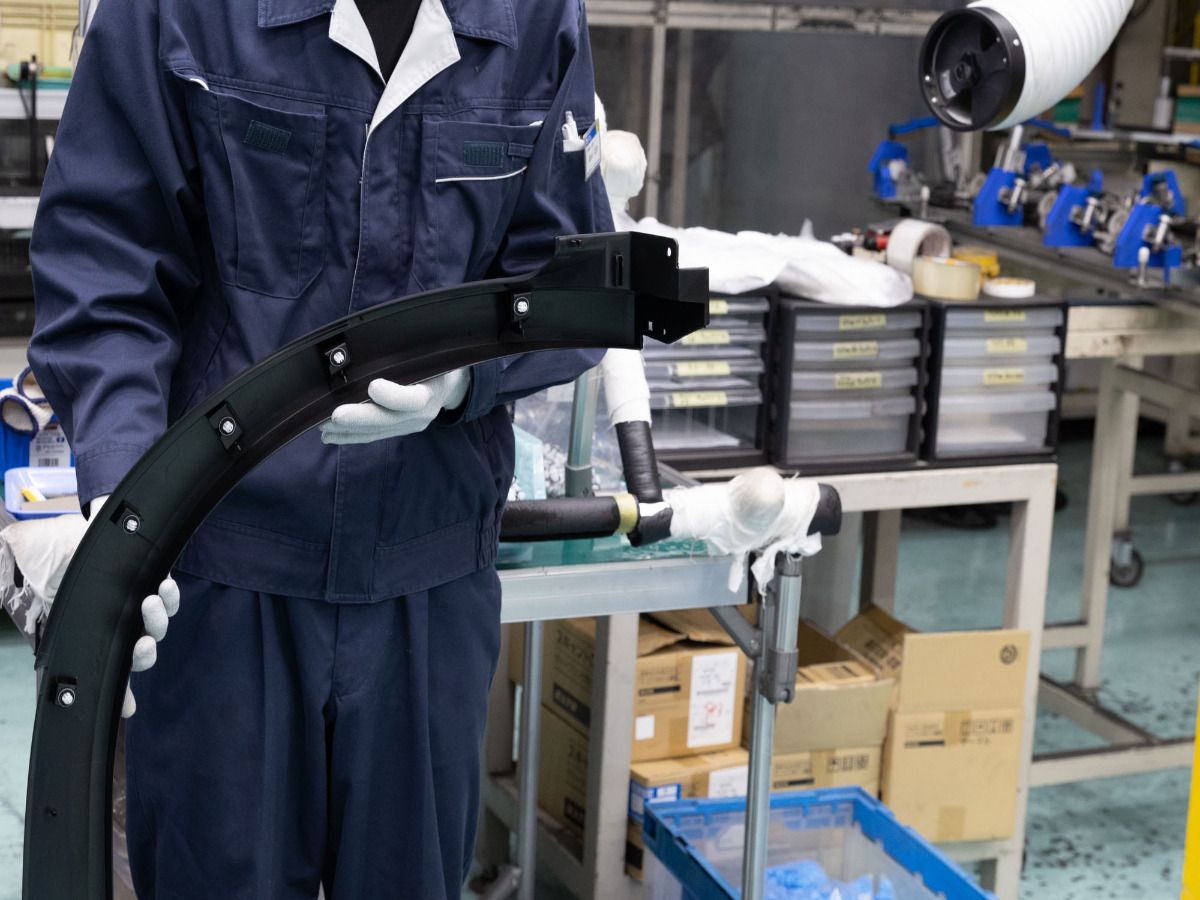
Automobile exterior parts using lightweight foaming technology for exterior parts
When did you begin the development? Please tell us how you got started.
Nakano: Development started in 2011. Actually, some very harsh words we received from a customer were the impetus for us to start.
For many years, our company has supplied exterior parts to automakers and automobile parts manufacturers. From one customer, we received a request for an estimate at a set time every year, but one year we didn’t receive a request no matter how long we waited. We wondered why, and when we asked about it, everyone in the exterior parts team was shocked by the reply. “We’re always looking forward to new proposals, but unfortunately we haven’t received any from you for many years,” they said. Together with the suspension of orders, we received these words questioning our company’s stance. As I mentioned, exterior parts are strictly required to have good external appearance, but on the other hand, since there is little room for development in terms of functionality, it was not given much importance. That made us complacent, and it was true that we weren’t being proactive about making new proposals.
However, I never imagined that the good relationship we had built up until then would collapse in an instant one day. Perhaps it was only us that thought it was a good relationship, and for them, it was frustrating that our company never came up with new proposals.
We had to regain the lost trust, and above all, it was a humiliating experience for us. We had a lot of discussions among the members and said, “Then, why don’t we make the world’s lightest exterior parts and regain their trust?” With our back to the wall, we were inspired to take on the challenge of reducing the weight of exterior parts, and that’s when we set our eyes on “foaming.”
Our Technological Capabilities Are the Basis of Our Ability to Make Proposals, Our Attractiveness, and Our Trust
I think there are various ways to reduce weight, but why did you choose “foaming”?
Nakano: Certainly, weight reduction can be achieved relatively easily by using expensive materials such as carbon resin. But then, it was clear that we could not convince our business partners in terms of price. So first of all, in order to keep manufacturing costs down, we decided to use polypropylene as the raw material. After that, we searched for a way to create exterior parts that are lightweight, rigid, and have excellent external appearance, and the answer we arrived at was “foaming.”
However, since this was the company’s first attempt at foaming resin, the odds weren’t in our favor. Each process was a series of trial and error. Compared to ordinary injection molding, “resin foamed injection molding” has many parameters that must be considered, such as the amount of material, temperature, pressure, selection of machinery and equipment, and so on, and when combined, there are as many as three billion patterns of manufacturing. In order to find the optimal combination of parameters, we needed to repeat trial production. We were truly climbing up the stairs one step at a time.
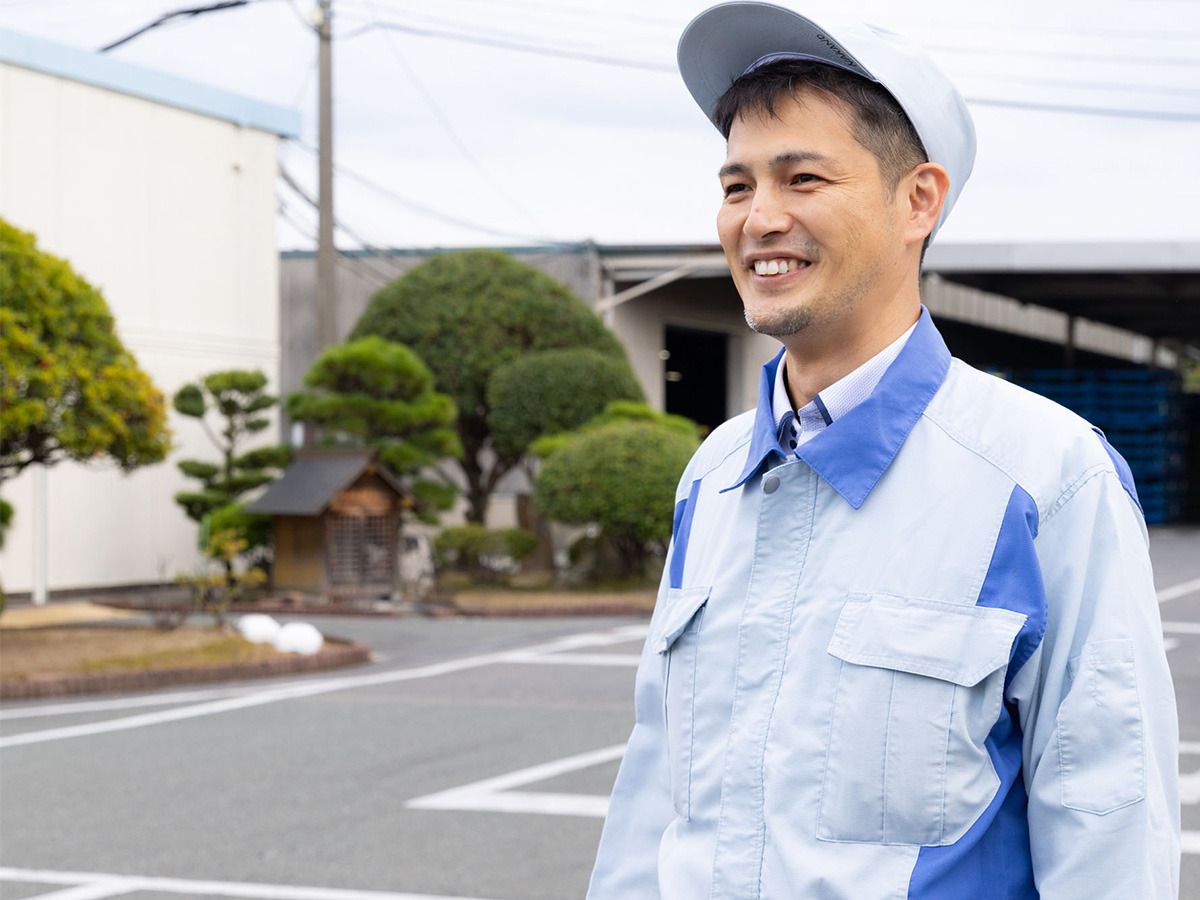
Shingo Nakano, Senior Engineer, Design Department
Mitsuishi: Prototyping was done mainly on Saturdays and Sundays so as not to disturb the mass production process of other parts. I wasn’t on the development team at the time, but when I happened to go to work on a weekend, I remember a member who passed by showed me a prototype, saying, “Look at all the bumps on this thing we made.” I think it must have been very difficult, but everyone seemed excited and having fun because they were attempting to develop the world’s first new technology.
Nakano: It really was fun, actually, although we were often scolded jokingly by our superiors, who said, “What are you thinking, making something like this?” (Laughs)
As expected, the key issue was that small irregularities were formed on the surface. Although the unevenness is inherent in foaming, it was unlikely that it would be adopted as an exterior part if there was an external appearance defect.
No matter how many times we tried, we couldn’t find a solution. And every time we looked at the failed prototypes lined up on the floor, we felt lost. However, one day, one of the members noticed that there were sections that wasn’t uneven in all the failed prototypes. From then on, we repeated research and prototyping from the perspective of “Why is there no unevenness here?” rather than “How can we prevent unevenness from occurring?”
As a result, the number of uneven sections gradually decreased, and finally we succeeded in creating a stable prototype with virtually no defects in external appearance. I think it was about two years since the start of development.

So you took that result and pitched it to the client again?
Nakano: Right. Although the customer was busy, we asked to make presentations many times, and finally the sales representative was given the opportunity to make a presentation. Initially, it was scheduled to last 30 minutes, but when we explained the main points of the technology using samples, they became very interested, and the discussion continued for two hours. In the end, they decided to adopt the product. After the presentation, they said, “You did an amazing job with exterior parts that had little room for improvement. Thank you.” Those words of praise made a deep impression on me, and they still remain in my heart.
Price is important, but “new technology” is what’s important to win the hearts and minds of our customers. Our technological capabilities are the basis of our ability to make proposals, our attractiveness, and our trust. I became keenly aware of that. It was a fresh reminder of how we must not stop the progress of technological development if we want to continue winning the trust of our customers
The Teamwork Behind the “New Technology”
Please tell us the success factors that enabled you to start from a desperate situation to successfully develop new technology.
Nakano: I think the most important factor is teamwork. The material design, die design, and process design departments were able to work together toward a single goal, and when other companies were still using foamed molding technology only for interior parts, we were able to apply it to exterior parts. If even one of them was missing, I think it would have been difficult to achieve.
Personally, I was reminded of the importance of “thinking through things without giving up,” which was a lesson I learned from the specialist who created the basic technology of foamed molding. As the project progressed, issues came up one after another, but even if something seems impossible at first, through trial and error, I think about the reasons why it doesn’t work and attack them one by one. When I feel stuck, I take a bath, go to sleep, and think about it again the next day.
Mitsuishi: I think I was truly blessed with my colleagues and superiors. When I say, “I want to try this method,” I’m never told “That’s no good” or get rejected outright. We accept the ideas of the members, and we all share our wisdom to explore the possibilities. It’s definitely easier to break through when you face the problem together rather than by yourself.
Taking on new technologies is always accompanied by difficulties, and you need the support of your colleagues to overcome them. I have wonderful colleagues here, so I would like to continue to take on the challenge of developing new technologies and move forward without fear of failure.
Through resin foamed injection molding technology, Resonac has succeeded in reducing the weight by 30% compared to conventional molded resin products for exterior parts. Behind the development was a pure enthusiasm for technology and teamwork. In part two, we ask about the reaction from automakers, including those from overseas, and the company’s vision for new technology development following the weight reduction foaming technology for exterior parts.
- ※ *Based on Resonac’s research.
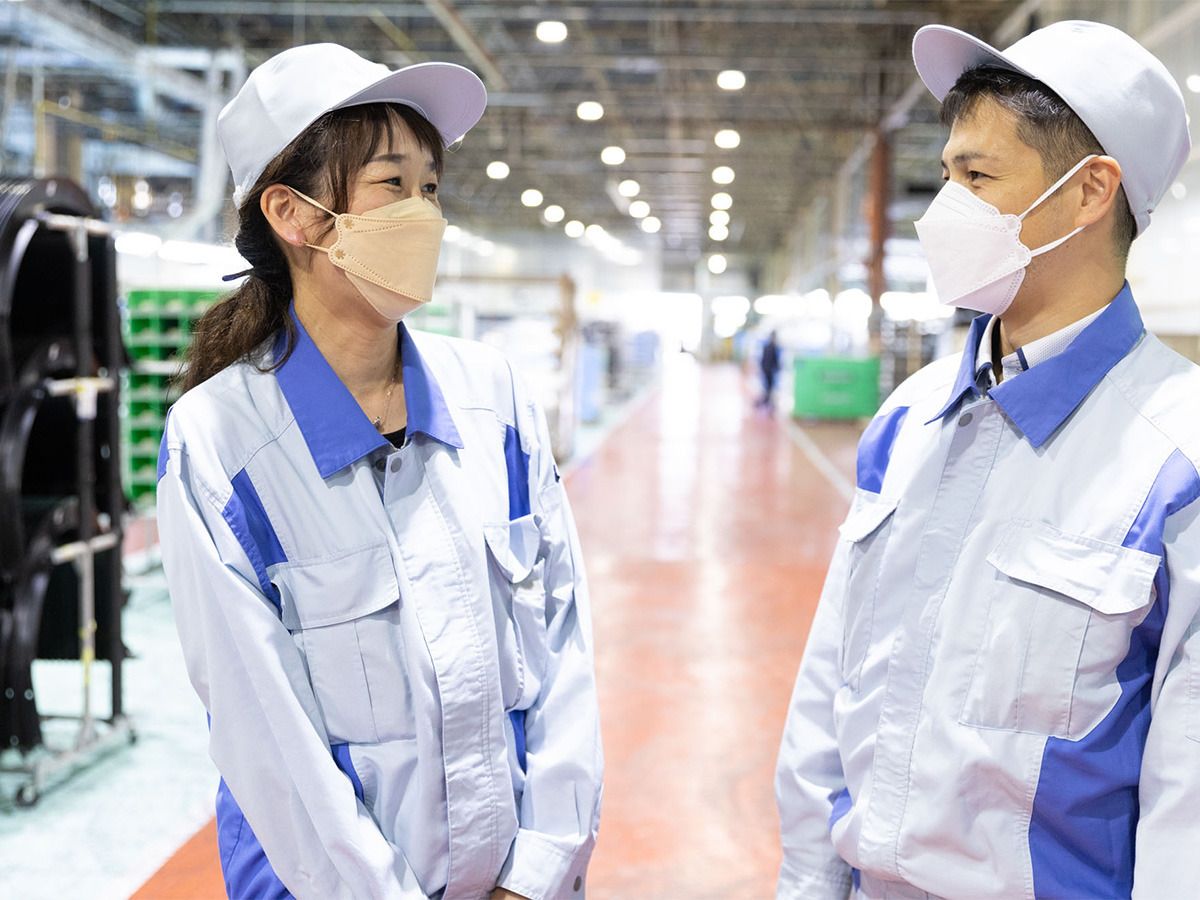
Shingo Nakano
Design Department, Resonac Automotive Products Corporation Kyushu Plant
Joined then Hitachi Chemical Automotive Products after working in design at an automotive manufacturer. Continued to gain experience in technical development and design of automotive interior and exterior parts up to the present date.
Naoko Mitsuishi
Design Department, Resonac Automotive Products Corporation Kyushu Plant
Joined then Hitachi Chemical Automotive Products.
Continued to gain experience in the design and production preparation of automotive interior and exterior parts and general molded products up to the present date.
